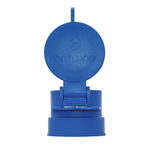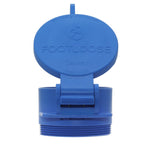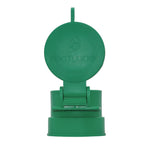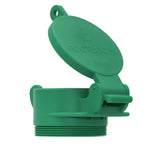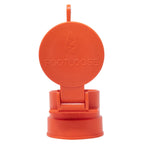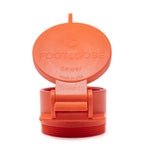You have no items in your shopping cart.
Winter RV travel offers unique experiences, but it also requires special preparation, particularly when it comes to your plumbing system. Many full-time RVers mistakenly believe they can’t use their RVs in freezing temperatures. The truth is, with the right steps, your RV can handle winter conditions, allowing you to enjoy year-round travel.
In this guide, we’ll cover how to winterize your RV's plumbing system so you can use your bathroom with peace of mind, even in freezing weather.
Can I Use My RV Toilet During Winter?
If you’re wondering whether you can use your RV toilet in cold weather, the answer is yes—with the right preparation. Here are three ways to ensure your RV plumbing can handle freezing temperatures:
1. You Own a 4-Season RV
A 4-Season RV comes equipped with built-in features that prevent your plumbing system from freezing. These RVs include heated and enclosed holding tanks, lines, and pipes. This design allows you to use water normally, even when temperatures drop. If you're interested in exploring more about 4-season RVs, check out this comprehensive guide on winter RV travel.
2. You’ve Winterized Your RV's Plumbing
Even if you don't have a 4-season RV, you can modify your existing RV for winter travel. Installing tank heaters and a separate heater for your utility compartment can protect your plumbing from freezing. Additionally, using digital freeze alarms alerts you when temperatures get too low.
3. Use RV Antifreeze
If modifying your RV isn't an option, you can still safely use your RV’s toilet during winter by adding non-toxic, RV-specific antifreeze to your plumbing system. This special pink antifreeze is designed to prevent your pipes from freezing and should not be confused with automotive antifreeze, which can damage your plumbing.

How to Winterize Your RV’s Plumbing System
Winterizing your RV’s plumbing system is essential if you plan to travel or store your RV during cold months. Below are the five steps you need to take to safely winterize your plumbing:
1. Drain Your Freshwater Tank and Pipes
Start by disconnecting your RV from any external water sources. Drain the freshwater tank and open all faucets, showerheads, and sprayers to let out remaining water. Don’t forget to drain your hot water heater and toilet tank as well.
Pro Tip: Make sure the water heater has cooled down before draining to avoid burns. For a detailed explanation of this process, check out this RV water heater guide.
2. Drain and Clean Your Wastewater Tanks
Next, drain your gray and blackwater tanks at a designated dump station. After emptying the tanks, flush them to remove any remaining debris. Make sure no water is left behind in the tanks, as even small amounts can freeze and damage your system.
If you want to know more about properly maintaining your tanks, visit this step-by-step RV tank cleaning guide.
3. Bypass the Water Heater
Ensure that your RV’s water heater is bypassed before adding antifreeze. This step prevents wasting gallons of antifreeze, which would otherwise fill the heater before reaching your pipes.
At this time, remove any water filters or purifiers from the system, and shut off your ice maker if you have one installed.
4. Circulate the RV Antifreeze
Now it’s time to introduce the antifreeze into your plumbing system. Pour 2-3 gallons of non-toxic, pink RV antifreeze into the freshwater tank and circulate it through your pipes by opening the cold and hot water faucets until pink liquid comes out. Don’t forget to flush the toilet to ensure that antifreeze reaches the blackwater tank.
5. Flush with Ease
Once your RV plumbing is winterized, you can continue using the toilet and wastewater tanks throughout the winter. Be sure to add a small amount of antifreeze to the toilet bowl each time you flush to prevent diluting the antifreeze already in the pipes and tanks.
Is Your RV Ready for Winter?
Whether you're planning to travel or store your RV during the colder months, winterizing your RV’s plumbing system is a critical step. By following these simple steps, you can confidently use your RV year-round without worrying about freezing pipes.
For additional tips on maintaining your RV, check out our complete RV maintenance guide. Winter travel doesn’t have to mean giving up the comforts of home—keep your RV plumbing in top shape and enjoy the journey!



